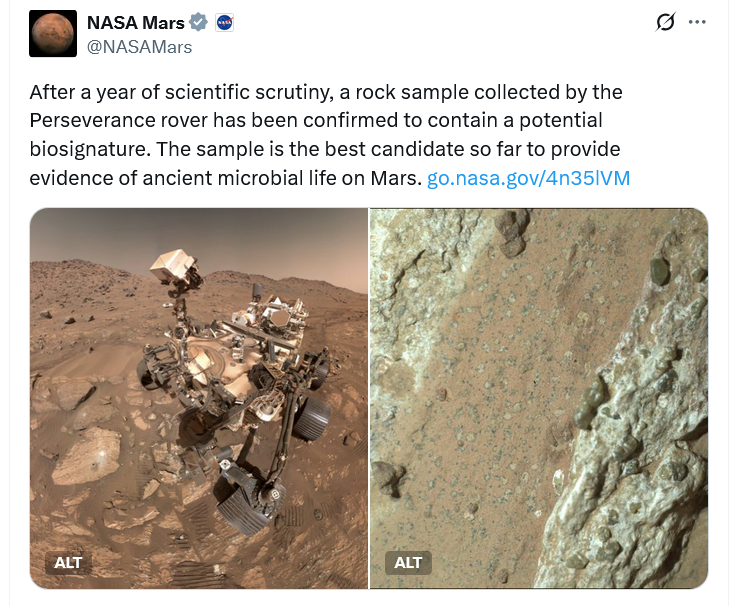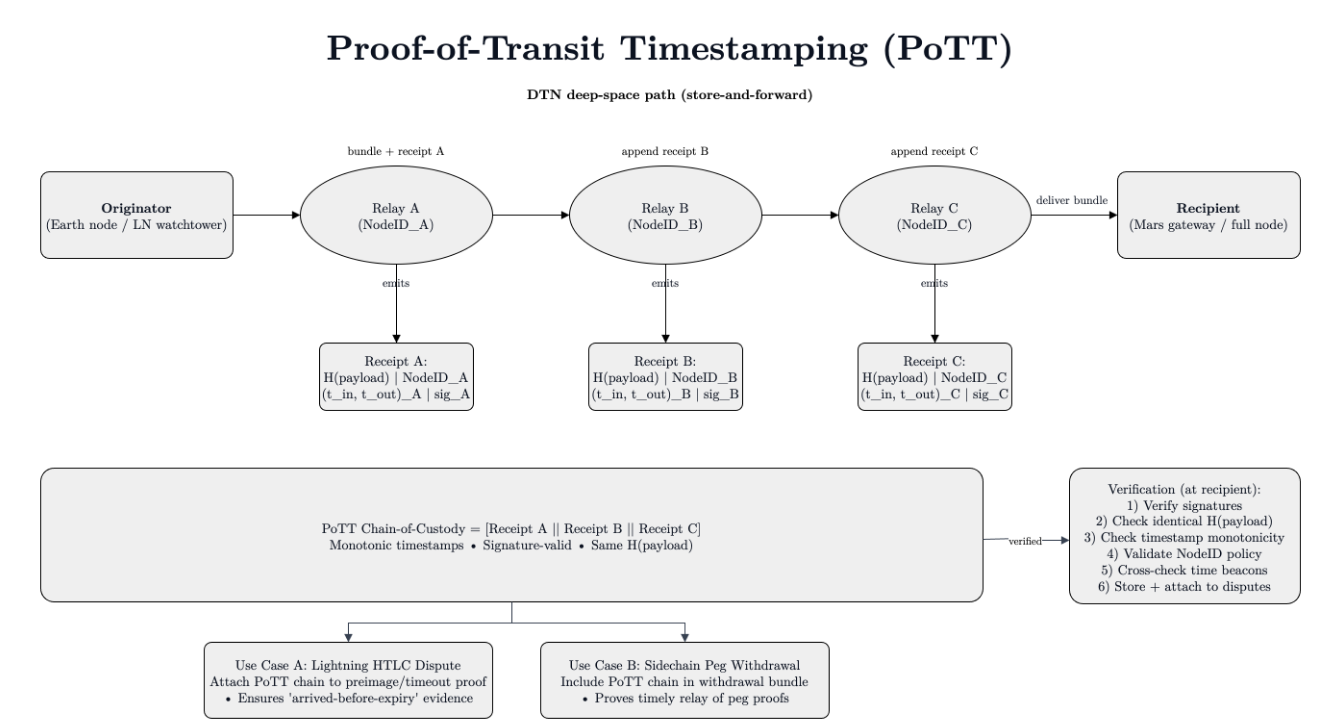Proof-of-Transit Suggests Bitcoin Could Be Transferred to Mars in as Little as Three Minutes via NASA or Starlink
BTC
BTC/USDT
$11,891,181,228.68
$92,519.95 / $90,236.00
Change: $2,283.95 (2.53%)
+0.0038%
Longs pay
Contents
Bitcoin to Mars is possible in minutes by combining optical Earth–Mars links (NASA/Starlink), the Lightning Network, and Proof-of-Transit Timestamping (PoTT). PoTT stamps each relay hop—ground stations, satellites or lunar relays—providing auditable, low-latency routing that can deliver Lightning payments between planets in ~3–22 minutes.
-
Proof-of-Transit Timestamping (PoTT) stamps and audits each relay hop, enabling auditable interplanetary Bitcoin transfers.
-
Using optical links and the Lightning Network, realistic Earth–Mars transfers could take 3 minutes (best-case) to 22 minutes (worst-case).
-
Blockstream and Spacechain experiments show Bitcoin can be received off-Earth; PoTT leverages those precedents and satellite optical links.
Bitcoin to Mars: Proof-of-Transit Timestamping enables auditable, near-real-time interplanetary payments. Learn how to test PoTT and Lightning on simulated links.
Bitcoin could be sent to and from Mars within three minutes by leveraging an optical link from NASA or Starlink and a new interplanetary timestamping system.
There is a feasible path to send Bitcoin from Earth to Mars in minutes using existing optical satellite links and a new audit layer called Proof-of-Transit Timestamping (PoTT). PoTT stamps transit hops so recipients can verify the exact path and timing of a payment.
Tech entrepreneur Jose E. Puente and collaborator Carlos Puente describe PoTT as the missing receipt layer that, when paired with the Lightning Network and optical links (e.g., NASA or Starlink optical channels), could enable auditable interplanetary payments today.
PoTT works by having transactions hop through relay stations—ground antennas, satellites or lunar relays—where each node records an arrival and departure timestamp before forwarding the message. Those stamps form an immutable travel receipt for the value transfer.

A NASA rover recently came across some rocks on Mars that might be evidence of past life. Source: NASA Mars
What is Proof-of-Transit Timestamping (PoTT)?
Proof-of-Transit Timestamping (PoTT) is a stamping protocol that records arrival and departure times at every relay hop, producing an auditable receipt trail for interplanetary Bitcoin transactions. PoTT enables verification of the route, timing and integrity of a Lightning payment across space.
How can Bitcoin reach Mars in minutes?
Optical links reduce signal latency and increase bandwidth compared with radio; paired with Lightning’s instant settlement model, PoTT provides the accountability layer. In simulations and white papers, best-case Earth–Mars Lightning transfers may complete in ~3 minutes, while worst-case alignment can reach ~22 minutes one-way.
Experiments by Blockstream (satellite relays) and Spacechain (ISS transaction) demonstrate Bitcoin can be received off-Earth, establishing precedent for satellite-assisted transfers without relying on a single ground provider.
Why are relay stamps necessary?
Because light-speed delays and multi-hop routing create ambiguous arrival times, stamps at each relay prove when a message arrived and left. This prevents disputes, enables forensic audits and satisfies regulatory or contractual requirements for time-sensitive transfers between planets.
Puente highlights that PoTT can be tested now by simulating Mars-level delays and running end-to-end demos over controlled optical or emulated links. That makes PoTT a practical near-term research and development target, not merely theoretical.

Diagram showing how PoTT would facilitate a Bitcoin transaction sent from Earth to Mars. Source: arXiv
Frequently Asked Questions
Can current satellites support interplanetary Bitcoin?
Yes. Existing satellite experiments show Bitcoin data can travel to and from space. Optical links under development by space agencies and private firms provide the bandwidth and timing precision PoTT needs.
How does PoTT handle solar conjunction blackouts?
PoTT designs include deliberate routing via relay satellites that avoid the Sun’s interference path, mitigating the two-week blackout that occurs roughly every 26 months during conjunctions.
Who needs to be on Mars to receive Bitcoin?
A recipient—human or autonomous agent—must accept Bitcoin on Mars. Past milestones like Blue Origin’s crypto acceptance and Spacechain’s ISS transaction show off-Earth reception is technically achievable, but wide adoption requires on-site infrastructure and wallets.
Key Takeaways
- PoTT enables auditable routing: Stamped relay hops create verifiable receipts for interplanetary payments.
- Lightning provides speed: Lightning Network offers local fast settlement while Bitcoin provides global finality.
- Testing is practical now: Simulating Mars-level delays and leveraging existing satellite experiments can demonstrate PoTT within months.
Conclusion
Bitcoin to Mars is not merely science fiction: combining optical space links, the Lightning Network and Proof-of-Transit Timestamping (PoTT) creates a feasible, auditable path for interplanetary payments. Researchers and space communications providers can run convincing demos today; the next step is coordinated testing and standards work to make interplanetary value transfer operational.
Published by COINOTAG — Updated: 2025-09-11. Reporting includes expert statements from Jose E. Puente and references to Blockstream and Spacechain experiments as public precedents.
Comments
Yorumlar
Other Articles
Bitwise Files for 11 Altcoin ETFs Including AAVE, UNI Amid SOL, XRP Muted Gains
December 31, 2025 at 08:47 PM UTC
Chainlink Withdrawals Signal Potential Accumulation Amid Tightening Supply
December 26, 2025 at 11:26 PM UTC
Chainlink Holds $12 Amid Token Unlocks and Potential Rebound Signals
December 20, 2025 at 01:07 PM UTC

